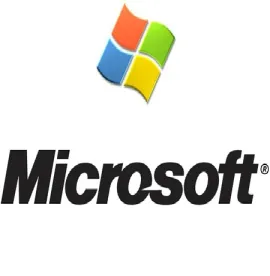Takeaway: One can use the fact that expert testimony regarding the unpatentability arguments was not presented with arguments that were previously before the Board in order to persuade the Board to not use its discretion under § 325(d) to deny the petition.
In its Decision, the Board determined that Petitioner had demonstrated that all challenged claims (8-14) of the ’520 Patent are more likely than not unpatentable, and instituted covered business method patent review. The ’520 Patent is directed to an interactive communication system for transmitting video games and karaoke software via communication lines from a host facility to a calling communication terminal located at each individual home.
The Board first discussed the level of ordinary skill in the art, and adopted the definition presented by Petitioner, which was not disputed. The Board then turned to claim construction, stating that the ’520 Patent has expired, therefore, the terms are given their plain and ordinary meaning as understood by a person of ordinary skill in the art at the time of the invention taking into account the language of the claims, specification, and prosecution history. The Board adopted Petitioner’s constructions, which were not disputed by Patent Owner.
Next, the Board discussed whether the ’520 Patent is eligible for covered business method patent review. In order to be eligible, the patent must claim “a method or corresponding apparatus for performing data processing or other operations used in the practice, administration, or management of a financial product or services, except that the term does not include patents for technological inventions.” AIA § 18(d)(1). Petitioner bears the burden of demonstrating that the ’520 Patent fits this definition. Regarding whether the ’520 Patent is directed to a financial service or product, Petitioner argued that claim 8 specifically recites a financial product or service because it teaches that the host facility includes a financial charging system and performs a financial charging process upon receiving an indication that the transmission of programs and/or data is complete. Patent Owner contended that merely including a mechanism for charging a fee is not enough to render the claim financial in nature. The Board agreed with Petitioner and held that claim 8 claims a system that is, at a minimum, complimentary or incidental to a financial activity. The Board then turned to the technical invention analysis. The Board found that Petitioner demonstrated that the technological invention exception does not apply, and credited Petitioner’s expert’s testimony that the challenged claims are directed to conventional, well known generic hardware combined with routine programming of a general purpose computer. This testimony, the Board noted, is consistent with a reexamination decision.
The Board then turned to the obviousness challenges. The Board first addressed Patent Owner’s 35 U.S.C. § 325(d) request that the Board exercise its discretion in favor of non-institution because the same or substantially the same prior art or arguments that were previously presented to the Office. The Board noted that Petitioner’s expert’s testimony was not considered in the prior ex parte reexaminations, and declined to exercise its discretion to deny the Petition.
The Board then turned to the substance of the challenges based on Chernow. Petitioner contended that Chernow teaches all of the limitations of claim 8, with the exception of the clock means, which is taught by Tsumara; that Chernow teaches all of the additional limitations of dependent claims 11, 13, and 14, with the exception of the sound generating means, which is also taught by Tsumara; and that Kato teaches a second clock means in dependent claims 9 and 10. The Board noted that Petitioner provided detailed claim charts identifying where the various limitations are present in the prior art that are supported by expert testimony. The Board credited this testimony and found it was more likely than not that the claims are unpatentable based upon the Chernow grounds.
The Board then examined the challenges based upon Okamoto. The Board agreed with Petitioner, and Petitioner’s expert, that Okamoto is prior art under § 102(b) because the earlier-filed applications that preceded the ’520 Patent did not describe the claimed “clock means” limitation of independent claim 8. Again, the Board credited Petitioner’s expert testimony, and found that it is more likely than not that the claims are unpatentable in view of Okamoto and the secondary prior art.
Sony Computer Entertainment America LLC and Microsoft Corporation Inc. v. ADC Technology Inc., CBM2015-00026
Dated: July 3, 2015
Paper 10: Decision on Institution of Covered Business Method Patent Review
Patent 6,193,520 B1
Before: Michael P. Tierney, Michael J. Fitzpatrick, and Minn Chung
Written by: Tierney
Related Proceeding: ADC v. Microsoft Corp., et al., No. 2:08-cv-01579-RSM (W.D. Wash.)



 />i
/>i


